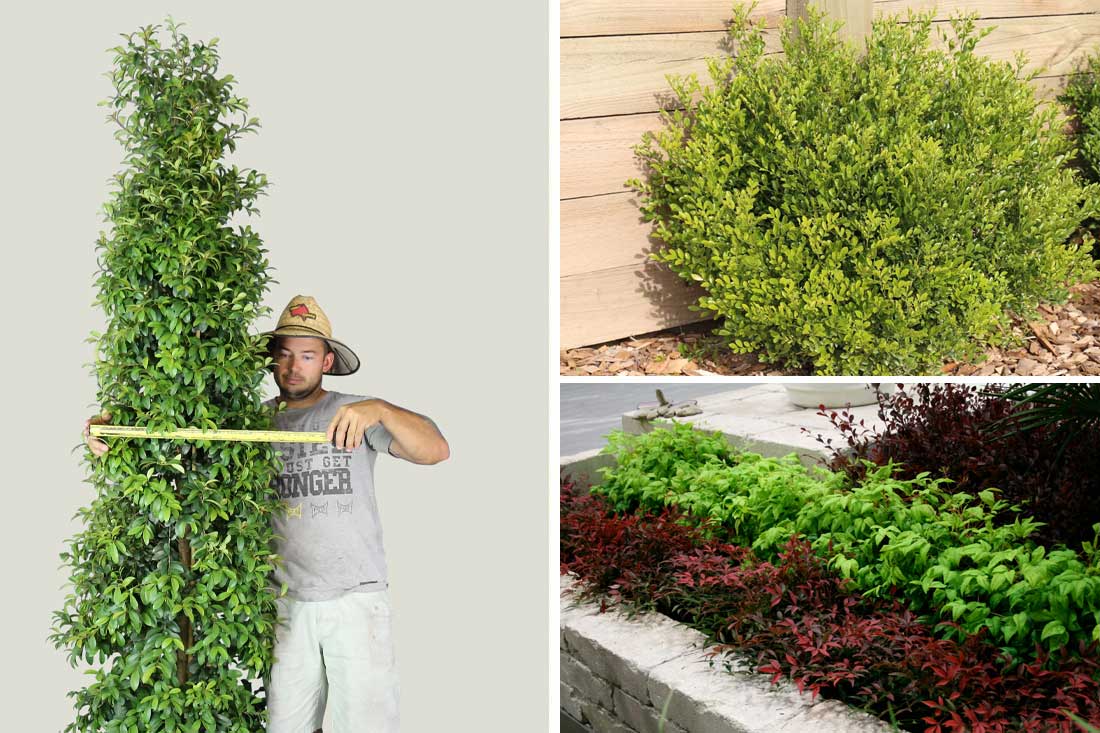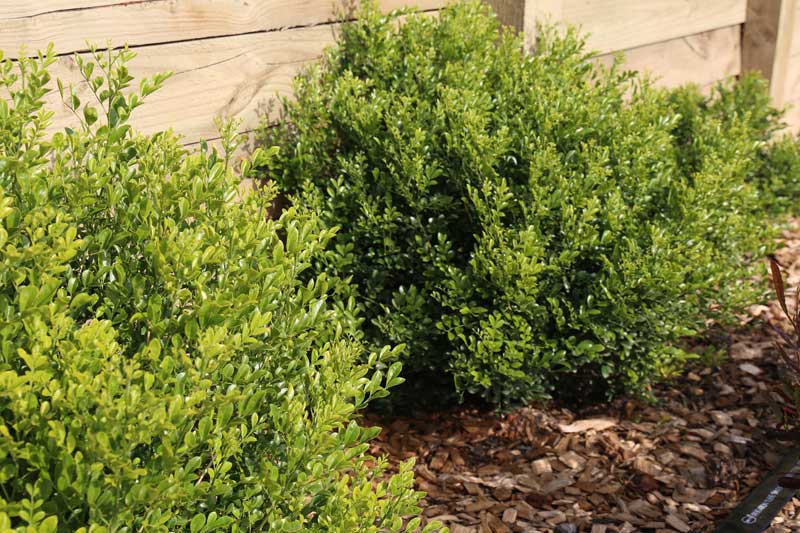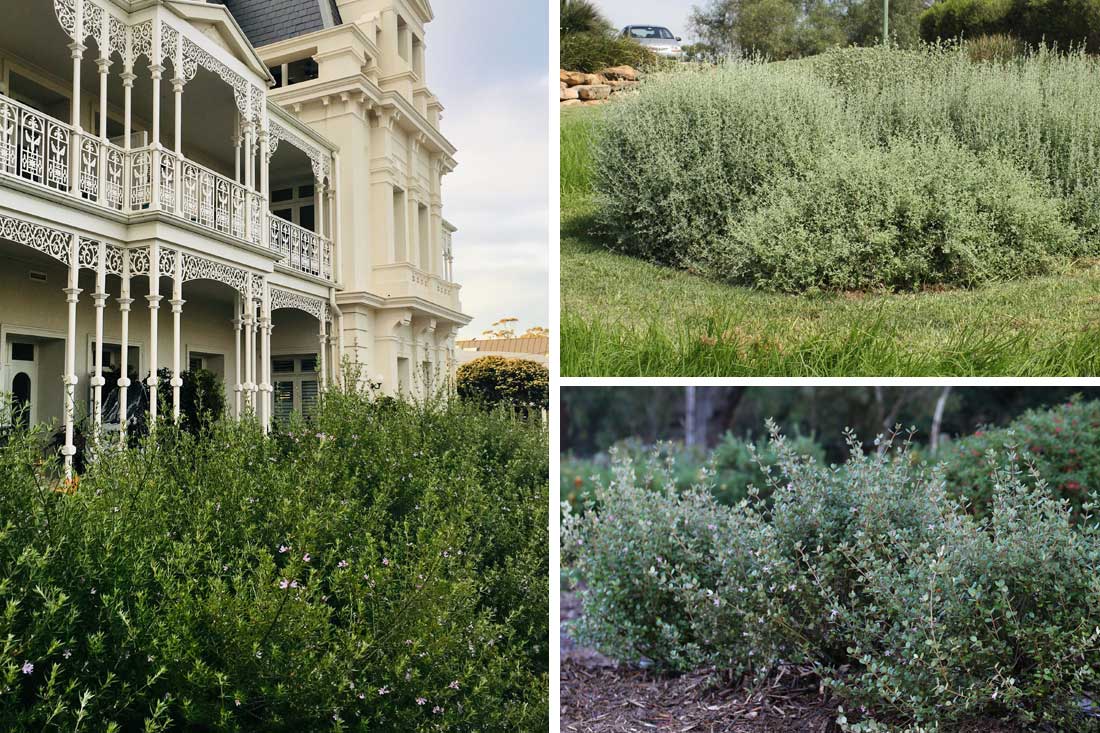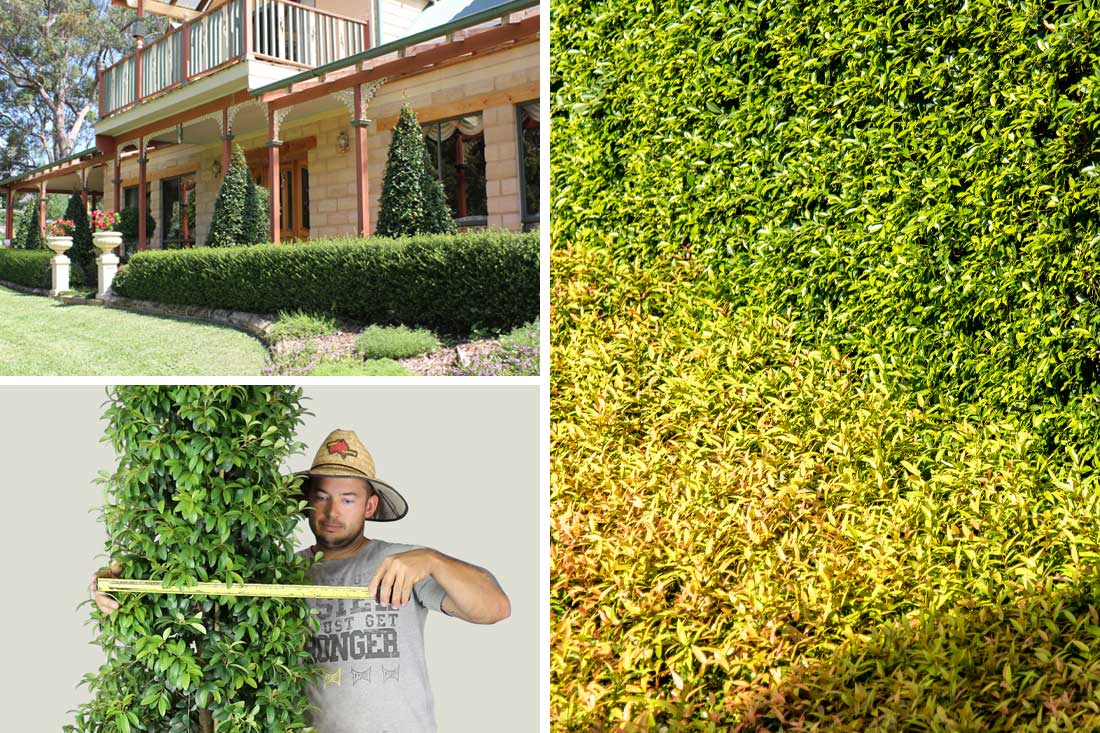Introduction: The Art of Selecting the Perfect Hedge Plants
Hedges and screens are a way to create privacy and define borders in a garden design. They can also reduce noise, soften harsh winds, and may improve air quality.
But not all plants are equal when it comes to creating effective barriers; choosing the right plant for the right place is a horticulturist’s mantra. This article will illuminate the path to selecting the perfect native Australian options for your tall hedges and screens, providing both aesthetic appeal and functional benefits.
Why Go Native with Your Hedge Choices?
It’s true that native plants often require less water and care than their non-native counterparts, and are often more beneficial to local biodiversity than exotic options.
While suggesting that all native plants unequivocally surpass others in every aspect is an oversimplification, the species highlighted in this article have proven to be conducive to local wildlife and are a testament to the splendour of our indigenous flora. These native hedges are robust, thriving in a diversity of environments across the country with minimal fuss.
Selecting the Right Plants for Your Needs
When selecting plants for your hedge, consider growth rate, mature height, and density. Maintenance levels, soil type, regional climate, micro climates, and how they interact with local biodiversity are also important factors to consider.
Your choice should align with your landscape goals, whether for privacy, windbreaks, noise reduction, border definition, or habitat creation.
Top Native Plants for Tall Hedges and Screens
Sweeper® Waterhousea floribunda ‘DOW20’ PBR
Ozbreed’s Sweeper® lilly pilly offers a compelling option for those seeking a dense screen with soft, weeping foliage. Its large clusters of white flowers bloom in summer, attracting birds and beneficial insects, adding life and colour to your garden.
Benefits
This cultivar is ideal for screening due to its thick foliage that creates a solid green wall, ensuring complete privacy. Its lush leaves also dampen noise effectively, making it a natural choice for urban areas.
Growth Habit and Size
With a heavily weeping habit, it can reach heights upwards of 10 metres if left unpruned, but can be maintained at a desired height with regular trimming.
How to Use it in the Landscape
This versatile plant works well as a standalone feature due to its attractive form but truly excels as a hedge. Plant them along boundaries for privacy or as a backdrop to garden beds to enhance depth and interest in garden design.
Sweeper Waterhousea is a giant, perfect for protecting your garden from prying eyes and unwanted winds.
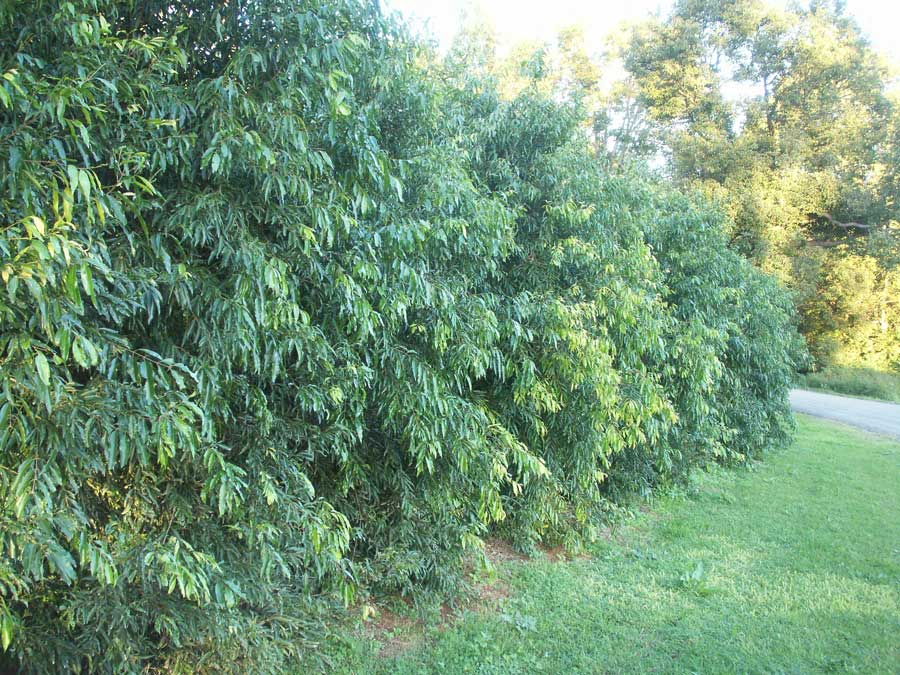
Pinnacle™ Syzygium australe ‘AATS’ PBR
Pinnacle™ Syzygium australe shines as a highly vertical element in the garden, making it perfect for tight spaces where a conventional hedge might be too broad.
Benefits
Its narrow, columnar growth habit makes it a perfect choice for screening without consuming valuable garden space. Ideal for urban gardens, Pinnacle™ provides privacy and can also serve as a windbreak in exposed sites.
Growth Habit and Size
Pinnacle™ lilly pilly has a uniquely slim profile for a tree, reaching up to 6 metres in height but rarely exceeding 1 metre in width. This makes it an excellent choice for creating vertical interest or as a formal avenue lining a driveway or boundary.
How to Use it in the Landscape
Due to its columnar shape, this cultivar is particularly effective when planted in a row for screening purposes, but it also stands out as a singular, architectural statement. For landscape architects, this tree’s uniformity offers a chance to introduce rhythm and structure into their designs.
Pinnacle Syzygium is a tall, columnar hedge. Perfect for along boundaries and spaces where space is tight.
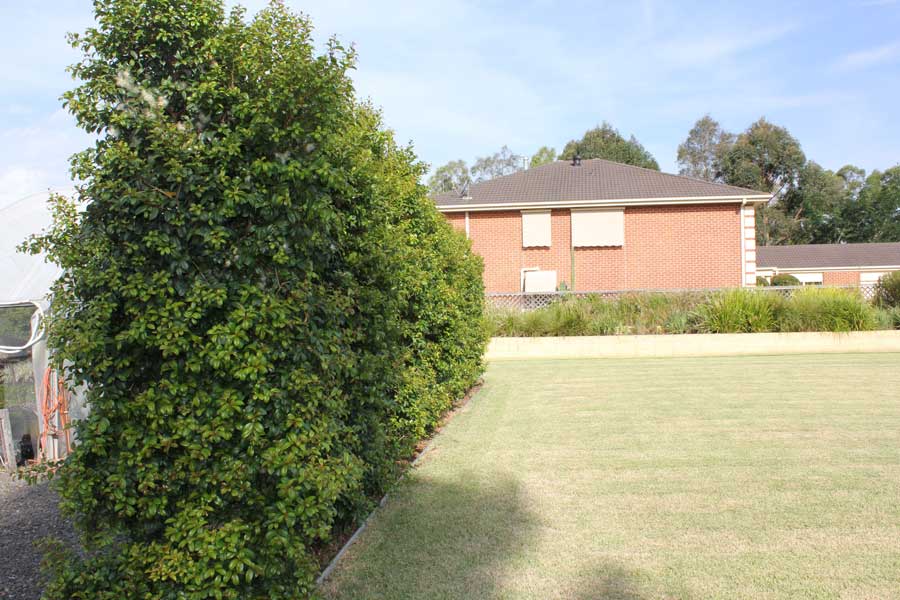
Sublime™ Acmena smithii ‘DOW30’ PBR
Sublime™ Acmena smithii presents garden designers with a striking hedge option that not only brings lushness to the landscape but also serves as an excellent screening plant due to its dense growth and refreshing lime-coloured new foliage. White fluffy flowers emerge in summer, though it rarely sets berries, reducing mess significantly.
Benefits
This native hedge is perfect for screening because of its dense growth habit, which creates a visual barrier from ground level up, ensuring privacy. It’s highly resistant psyllids and myrtle rust, making it an advantageous choice for both ornamental and practical purposes within the garden.
Growth Habit and Size
Sublime™ Acmena smithii grows to a sizeable 5 metres height with a spread of 2-3 metres. It exhibits a robust and bushy growth pattern, lending itself well to create a substantial hedge or screen.
How to Use it in the Landscape
Planting this variety can serve multiple functions; it’s ideal for creating hedges, topiary, or as a standalone feature. Given its tolerance for a range of conditions, including seaside gardens, urban environments, and various soil types, from well-drained soils to heavy clay loams, it’s remarkably versatile. Plant them in full sun to part shade for optimal growth.
Sublime Acmena is tall enough for screening, but small enough to not get out of hand.
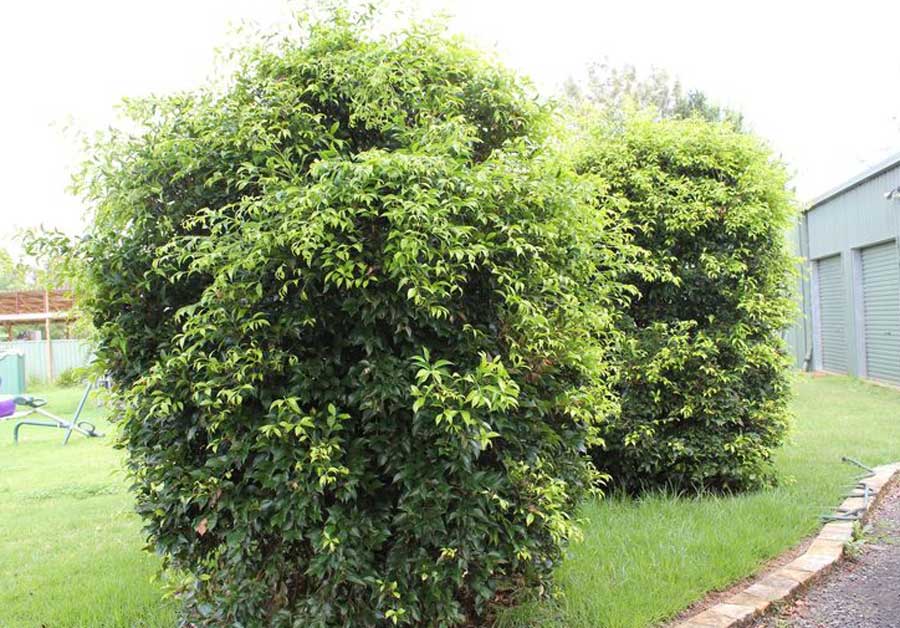
Macarthur™ Callistemon viminalis ‘LC01’ PBR
Macarthur™ Callistemon viminalis is a flowering native shrub that brings vibrant life to gardens and landscapes with its fresh green-toned foliage and prolific flowering habit.
Benefits
Its profusion of red bottlebrush flowers in spring make it a particularly attractive choice for screens that provide more than just privacy. These plants attract a variety of pollinators, increasing local biodiversity and providing a spectacular display of colour and life.
Growth Habit and Size
The Macarthur™ bottlebrush cultivar demonstrates a growth pattern that’s both upright and slightly spreading, reaching up to 1.8 metres in height by 1.5 metres wide. This size allows it to function as both a short screen and an ornamental feature.
How to Use it in the Landscape
Due to their hardiness and attractive flowering, Macarthur™ Callistemon can be used for short-to-medium hedges and screens. They can tolerate both drought and flooding, so they’re even perfect for bio swales.
Macarthur is a medium-sized hedge that’s perfect for attracting pollinators and can withstand both drought and wet feet.
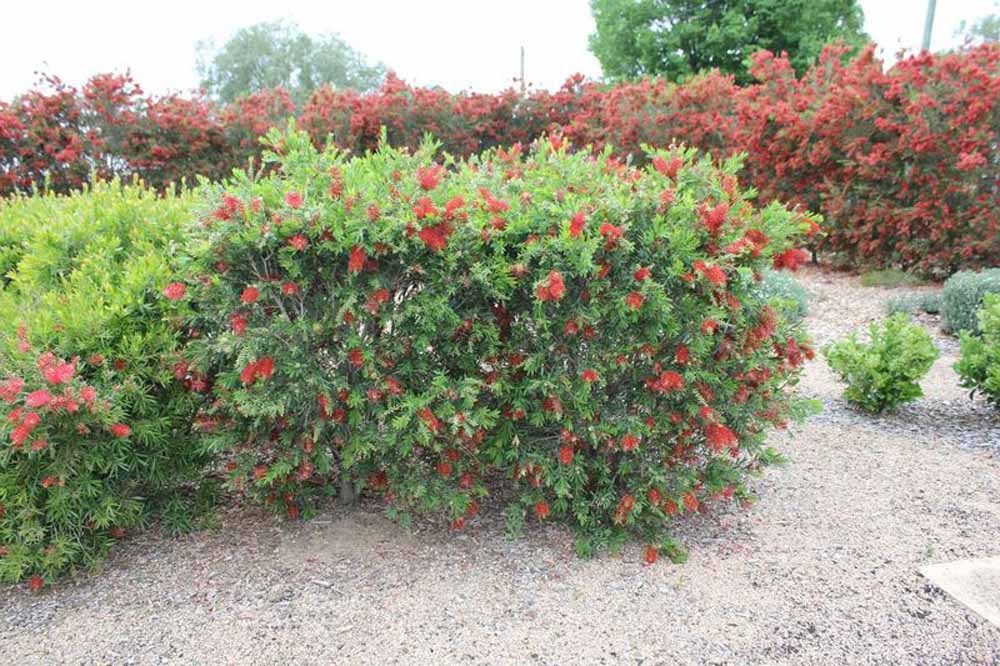
Slim™ Callistemon viminalis ‘CV01’ PBR
Slim™ Callistemon is another plant that offers a tight growth habit. This makes it suited for narrow spaces without sacrificing the height needed for effective screening.
Benefits
Ideal for urban gardens where space is at a premium, Slim™ Callistemon provides privacy in tight planting areas while maintaining an attractive appearance with its slender form. This plant has the added benefit of bringing the iconic bottlebrush flowers to even the smallest of gardens.
Growth Habit and Size
With its fastigiate form, Slim™ Callistemon can reach up to 3 metres high while maintaining a slender width of no more than 1.3 metres. It flowers prolifically through spring and summer, and then again in autumn.
How to Use it in the Landscape
These plants are particularly suited to creating green screens along fences or buildings and can be planted in rows to achieve a formal look. Due to its narrow footprint, it is also an excellent choice for flanking garden paths or for adding vertical interest in mixed borders, without encroaching on valuable planting space.
Slim Callistemon is another columnar hedge, and it can also withstand both drought and flooding.
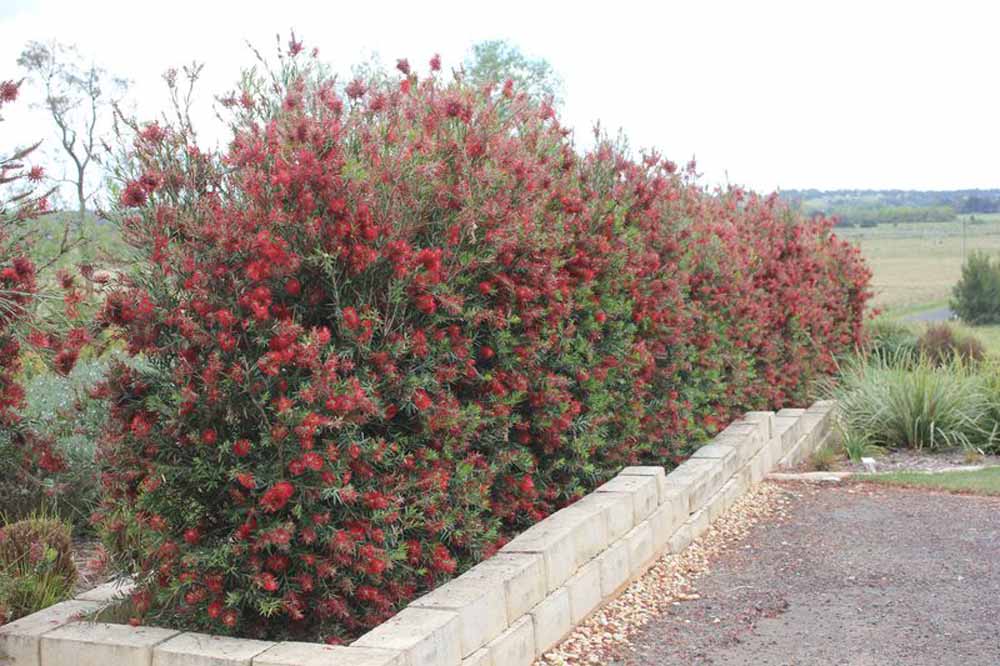
Best Practices for Establishing Your Native Hedge
When establishing a native hedge, the key to success lies in careful selection and planting of your chosen species. Ensuring the plant is suited to the local conditions will lead to a vigorous and vibrant hedge that requires less maintenance and provides optimal screening.
Choosing the Right Plant
Selecting the right plant for the right place involves considering several factors:
- Sunlight: Assess the amount of sunlight the planting site receives and choose plants accordingly. Full sun-loving natives will not thrive if shaded for most of the day, while shade-preferring species may struggle in full sun.
- Soil Type: Analyse the soil type – sandy, loamy, silty or clayey – and its drainage capability. Many Australian natives prefer well-drained soils, but some can tolerate heavier types.
- Climate: Consider the local climate, including temperature extremes and rainfall patterns. Ensure the plant’s hardiness matches the local weather conditions to avoid frost or heat damage.
- Companion Plants: Group plants with similar needs regarding water, light, nutrients and soil to ensure all specimens thrive without competing for resources.
Plant Spacing, Depth, and Alignment
Proper spacing is essential for plant health and hedge density:
- Spacing: Check the specific plant label for each species’ spacing requirements. As a rule of thumb, planting closer will yield a denser hedge faster, but it’s more expensive due to increased plant stock.
- Depth: Plant twice as wide and at the same depth as the container they came in – too deep can cause stem rot, and too shallow may stress the roots. Avoid glazing the sides of the hole in clayey soils by breaking them apart with a shovel or mattock.
- Alignment: For straight hedges, use a string line as a guide. For informal arrangements, stagger the plants to create a natural look.
Watering, Feeding, and Pruning Advice
To establish strong, healthy plants:
- Watering: Initially, water the plants deeply to encourage your plants to establish. Regularly water (without overwatering) for the first few months as they establish. Gradually reduce watering as the plants establish to promote resilience.
- Feeding: Apply a regular fertiliser suited to to your chosen native plants. While the plants in this article can accept a regular fertiliser, avoid high phosphorous formulas for those in the Proteaceae family.
- Pruning: Begin pruning early to promote bushy growth and prune regularly to maintain shape and density. Alternatively, allow your plants to do their own thing and grow to their genetic destiny.
Ongoing Maintenance to Ensure Health and Density
Maintaining a thick, healthy hedge is a long-term commitment involving consistent care strategies:
- Pruning: Prune at least once a year for shape and to encourage new growth. Some species may require more frequent pruning to retain density.
- Troubleshooting Common Problems: Keep an eye out for pests, diseases, or signs of nutrient deficiencies. Address issues promptly to prevent spread and safeguard the health of your hedge. Remove ties no later than one year after planting.
Conclusion
Choosing native plants for your hedge can provide numerous benefits: the right specimens are more resilient, require less water, and offer habitats for local wildlife.
Remember to select the right plant for your site’s conditions and maintain your hedge with appropriate watering, feeding, and pruning. With patience and care, a native hedge becomes a long-term investment that rewards both the environment and the aesthetic appeal of your space.


